Around the short-wave world, mention of 'PsyOps' has recently had reason to reappear. It refers to psychological warfare being conducted by NATO forces to 'scare' Colonel Gadaffi's forces into remission through a variety of activities. One of these activities is the broadcast of semi-threatening, warning messages to troops loyal to Libya's erstwhile leader.
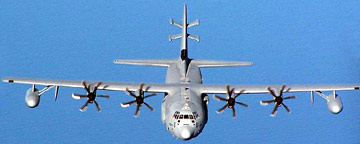 These messages have apparently been broadcast from a Lockheed Martin EC-130 aircraft known as Commander Solo overflying the region and are using the frequencies which belong to the 'Great Man Made River Authority' (GMMRA) which is Libya's authority responsible for artificially transporting water from wells in the Sahara desert via a big pipe to population centres in the North. Why NATO would have chosen these frequencies is not known, however there is (or was) apparently an ALE network on these channels that was presumably in regular use and hence there would be several receivers across the country in 'important offices' which would hear the PsyOps transmissions.
These messages have apparently been broadcast from a Lockheed Martin EC-130 aircraft known as Commander Solo overflying the region and are using the frequencies which belong to the 'Great Man Made River Authority' (GMMRA) which is Libya's authority responsible for artificially transporting water from wells in the Sahara desert via a big pipe to population centres in the North. Why NATO would have chosen these frequencies is not known, however there is (or was) apparently an ALE network on these channels that was presumably in regular use and hence there would be several receivers across the country in 'important offices' which would hear the PsyOps transmissions.
Frequencies reported in use by the GMMRA in recent times include 4200, 5037, 5047, 5300, 5368, 5768, 6884, 7000, 8161, 8200, 8800, 9218, 9250, 9375, 10125, 10375, 10404 and 11100 kHz. Previous reported frequencies also include 3000, 3900, 4050, 6800, 7805, 7900, 10215 and 10250 kHz (thanks to Btown Monitoring Post).
Of the above, NATO PsyOps transmissions have so far been heard on: 6877, 9376, 10125, 10404 kHz. Note that the 10125 kHz frequency is slap bang in the middle of the 30 metre amateur band but as this is a shared frequency with other services the transmission by the military does not contravene the ITU frequency allocation tables and is therefore, effectively legal. The use of 7000 kHz by the GMMRA is not, however, legal as this is an exclusive amateur allocation. Initially, many of the PsyOps transmissions were jammed (presumably by the Gadaffi regime) however they no longer appear to be so.
Here's the Wireless Waffle recording of Commander Solo on 10404 kHz made at 14:00 GMT on 12 July 2011. The transmission ceased at 14:20 GMT. The noise underneath the transmission also ceased around the same time, however whether the two are connected (ie the noise is an attempt at jamming) can not be confirmed. Given that this recording was made in the UK, it is clear that the power of the transmitter used by Commander Solo and his ilk must be reasonbly high. Judging by the signal strength and general propagation conditions at the time of the recording, a radiated power of at least 1 kiloWatt would seem about right. As normal HF aircraft radios have powers of at least 200 Watts, this seems quite feasible.
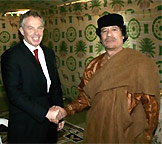 Of course, all that the Colonel has to do to stop the NATO transmissions becoming a nuisance, is hand out free power line adaptors to at least one house on every street and all short-wave frequencies would be instantly jammed. Perhaps Colonel Gadaffi is an investor the Comtrend PLT devices that do all the damage and the reluctance of Ofcom to do anything about them is part of some previous UK-Libya trade agreement on arms sales. Surely now that the UK is part of a force against Gadaffi, Ofcom can now breach the terms of this agreement with the Libyan government to pollute short-wave and finally get rid of the menace of PLT?
Of course, all that the Colonel has to do to stop the NATO transmissions becoming a nuisance, is hand out free power line adaptors to at least one house on every street and all short-wave frequencies would be instantly jammed. Perhaps Colonel Gadaffi is an investor the Comtrend PLT devices that do all the damage and the reluctance of Ofcom to do anything about them is part of some previous UK-Libya trade agreement on arms sales. Surely now that the UK is part of a force against Gadaffi, Ofcom can now breach the terms of this agreement with the Libyan government to pollute short-wave and finally get rid of the menace of PLT?
 These messages have apparently been broadcast from a Lockheed Martin EC-130 aircraft known as Commander Solo overflying the region and are using the frequencies which belong to the 'Great Man Made River Authority' (GMMRA) which is Libya's authority responsible for artificially transporting water from wells in the Sahara desert via a big pipe to population centres in the North. Why NATO would have chosen these frequencies is not known, however there is (or was) apparently an ALE network on these channels that was presumably in regular use and hence there would be several receivers across the country in 'important offices' which would hear the PsyOps transmissions.
These messages have apparently been broadcast from a Lockheed Martin EC-130 aircraft known as Commander Solo overflying the region and are using the frequencies which belong to the 'Great Man Made River Authority' (GMMRA) which is Libya's authority responsible for artificially transporting water from wells in the Sahara desert via a big pipe to population centres in the North. Why NATO would have chosen these frequencies is not known, however there is (or was) apparently an ALE network on these channels that was presumably in regular use and hence there would be several receivers across the country in 'important offices' which would hear the PsyOps transmissions.Frequencies reported in use by the GMMRA in recent times include 4200, 5037, 5047, 5300, 5368, 5768, 6884, 7000, 8161, 8200, 8800, 9218, 9250, 9375, 10125, 10375, 10404 and 11100 kHz. Previous reported frequencies also include 3000, 3900, 4050, 6800, 7805, 7900, 10215 and 10250 kHz (thanks to Btown Monitoring Post).
Of the above, NATO PsyOps transmissions have so far been heard on: 6877, 9376, 10125, 10404 kHz. Note that the 10125 kHz frequency is slap bang in the middle of the 30 metre amateur band but as this is a shared frequency with other services the transmission by the military does not contravene the ITU frequency allocation tables and is therefore, effectively legal. The use of 7000 kHz by the GMMRA is not, however, legal as this is an exclusive amateur allocation. Initially, many of the PsyOps transmissions were jammed (presumably by the Gadaffi regime) however they no longer appear to be so.
Here's the Wireless Waffle recording of Commander Solo on 10404 kHz made at 14:00 GMT on 12 July 2011. The transmission ceased at 14:20 GMT. The noise underneath the transmission also ceased around the same time, however whether the two are connected (ie the noise is an attempt at jamming) can not be confirmed. Given that this recording was made in the UK, it is clear that the power of the transmitter used by Commander Solo and his ilk must be reasonbly high. Judging by the signal strength and general propagation conditions at the time of the recording, a radiated power of at least 1 kiloWatt would seem about right. As normal HF aircraft radios have powers of at least 200 Watts, this seems quite feasible.
 Of course, all that the Colonel has to do to stop the NATO transmissions becoming a nuisance, is hand out free power line adaptors to at least one house on every street and all short-wave frequencies would be instantly jammed. Perhaps Colonel Gadaffi is an investor the Comtrend PLT devices that do all the damage and the reluctance of Ofcom to do anything about them is part of some previous UK-Libya trade agreement on arms sales. Surely now that the UK is part of a force against Gadaffi, Ofcom can now breach the terms of this agreement with the Libyan government to pollute short-wave and finally get rid of the menace of PLT?
Of course, all that the Colonel has to do to stop the NATO transmissions becoming a nuisance, is hand out free power line adaptors to at least one house on every street and all short-wave frequencies would be instantly jammed. Perhaps Colonel Gadaffi is an investor the Comtrend PLT devices that do all the damage and the reluctance of Ofcom to do anything about them is part of some previous UK-Libya trade agreement on arms sales. Surely now that the UK is part of a force against Gadaffi, Ofcom can now breach the terms of this agreement with the Libyan government to pollute short-wave and finally get rid of the menace of PLT?add comment
( 1296 views )
| permalink
| 



 ( 3 / 132407 )
( 3 / 132407 )




 ( 3 / 132407 )
( 3 / 132407 )
Tuesday 12 July, 2011, 14:39 - Broadcasting
Posted by Administrator
Tuning around the 13 MHz broadcast band, Radio Nederland on 13700 kHz being transmitted from Wertachtal in Germany was sounding rather odd. It had a very pronounced echo which made understanding it very difficult (if you could understand Dutch in the first place!)Posted by Administrator
You will note in the brief recording that towards the end the echo becomes less evident and listening over a longer period it was clear that the echo faded in and out. This can only mean one of two possible things:
(1) The echo was being caused by transmitting the same material, slightly delayed, from a second transmitter site; or
(2) The echo was being caused by receiving duplicated copies of the same material, delayed by some other means.
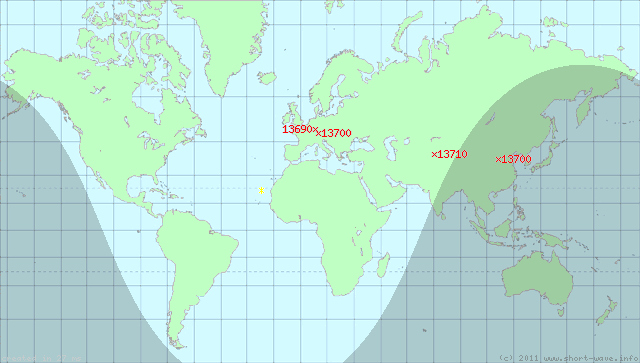
As far as was apparent, there were no other transmitters being used on that frequency by Radio Nederland, though there was meant to be a transmitter in China on the same frequency which might have been erroneously relaying the programme by mistake. But the cause is more likely to be some other means. Could it, for example, have been caused by being propagated all the way around the Earth.
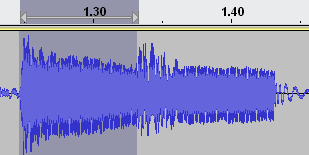 A quick calculation shows that the delay associated with a round the globe trip is approximately 133 ms (40000 km at 300000 km/s). A snapshot of the pips on the hour is shown on the right, indicating a delay of about 80 ms - so it can't be that! Even if one signal were short-path and the other long-path the delay would only be slightly shorter at around 127 ms so it's not that either.
A quick calculation shows that the delay associated with a round the globe trip is approximately 133 ms (40000 km at 300000 km/s). A snapshot of the pips on the hour is shown on the right, indicating a delay of about 80 ms - so it can't be that! Even if one signal were short-path and the other long-path the delay would only be slightly shorter at around 127 ms so it's not that either.No other signals in the band were exhibiting the same characteristics which is usually a good sign that it's not a propagation issue (though the BBC Russian transmission on 13745 kHz from the UK did have some very odd rapid fading on it).
The most likely cause seems to be that there were two transmitters on-air at the same time on the same frequency with the same material. Of the other Radio Nederland transmissions due to be on at the same time, all were present and correct which would suggest that it wasn't a transmitter erroneously on the wrong frequency.
Very odd...!
Saturday 28 May, 2011, 15:48 - Pirate/Clandestine
Posted by Administrator
Driving around London the other day, there was time to have a good old tune through the FM band to see how the various new community radio stations were getting on and whether Ofcom had had much success in shutting down the myriad of pirates. But the job was much more difficult that usual! The difficulty lies in the fact that many of the community stations sound like pirates, and the pirates that are still on air sound almost professional, at least as professional as the community stations that are slowly replacing them.Posted by Administrator
 Take Rinse FM (now legally broadcasting on 106.8) as a case in point. Now you might not particularly like the wack-a-jaffa, hardbeat, dirty garage or deep-boom gruffty music that they play (at least that's what it sounded like), but since their move to legality, the main thing which seems to have changed is that the presenters are marginally more professional (some of the street slang used before seems to have been tidied up), can read out a proper phone numbers, and can say where listeners are calling in from and give their names. So instead of 'big shout out to the hard-jaffa massive' and 'big up the 607', it's 'but shout out to Doreen of Tooting', and 'big up Dave who's cleanin' the missis's car'. It's lost it's edge a bit. Much the same can be said of Reprezent whose youth-orientated broadcasting sounds much of a muchness.
Take Rinse FM (now legally broadcasting on 106.8) as a case in point. Now you might not particularly like the wack-a-jaffa, hardbeat, dirty garage or deep-boom gruffty music that they play (at least that's what it sounded like), but since their move to legality, the main thing which seems to have changed is that the presenters are marginally more professional (some of the street slang used before seems to have been tidied up), can read out a proper phone numbers, and can say where listeners are calling in from and give their names. So instead of 'big shout out to the hard-jaffa massive' and 'big up the 607', it's 'but shout out to Doreen of Tooting', and 'big up Dave who's cleanin' the missis's car'. It's lost it's edge a bit. Much the same can be said of Reprezent whose youth-orientated broadcasting sounds much of a muchness.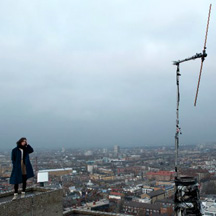 On the other side, it looks like Ofcom has been doing a reasonable job on some of the pirates. There were certainly a lot fewer on the band with many of the smaller stations seemingly off-air (though this could be because it was mid-week). There was only a brief glimpse of Point Blank, whose signals on 90.2 and 103.5/6 were staples for house-heads. A scratchy sound on 90.2 was all there was and 103.5 has been dead for some time now. Passion FM was still audible on both 91.8 and 97.9 MHz. Unknown FM seemed completely absent but there was a strong signal on 89.4 around North London with no RDS and no announcements which was assumed to be them. One new station was Pulse London who were on one of Unknown's old frequencies of 108.0 MHz. Listening to them, it's clear that they have set up as a streaming web radio station and even state on their web-site that they are 'not available through digital or analogue broadcasts' - a common ploy amongst modern-day pirates, so that they can deny knowledge of the FM transmitter and pretend to be totally above board.
On the other side, it looks like Ofcom has been doing a reasonable job on some of the pirates. There were certainly a lot fewer on the band with many of the smaller stations seemingly off-air (though this could be because it was mid-week). There was only a brief glimpse of Point Blank, whose signals on 90.2 and 103.5/6 were staples for house-heads. A scratchy sound on 90.2 was all there was and 103.5 has been dead for some time now. Passion FM was still audible on both 91.8 and 97.9 MHz. Unknown FM seemed completely absent but there was a strong signal on 89.4 around North London with no RDS and no announcements which was assumed to be them. One new station was Pulse London who were on one of Unknown's old frequencies of 108.0 MHz. Listening to them, it's clear that they have set up as a streaming web radio station and even state on their web-site that they are 'not available through digital or analogue broadcasts' - a common ploy amongst modern-day pirates, so that they can deny knowledge of the FM transmitter and pretend to be totally above board. The thing is that with pirate stations increasingly claiming to be legit (and probably paying their PPL and PRS dues) they can start to be a bit more daring with phone numbers and names too. The upshot is that they sound much like the legitimate community stations. The fact that both often fill their daytime schedule with pre-recorded non-stop music makes the situation even worse.
As a result, telling what is legit from what is not is getting increasingly difficult.
Surely it's time for Ofcom to hold an amnesty and work with the more established pirates to find a solution. Give them a licence (cf. Rinse) and bring it all under control. The new 'Vibe1076' for Watford is a case in point. It's test transmissions sound just like any other commercial radio station of which the need is rather dubious. But in North London (much the same area) there are three Turkish language pirates (Bizim FM on 101.8, Radyo Umut on 102.8 and DEM Radyo 90 on 104.2). Surely sitting down with the Turkish community and finding a way to give them something they need would have been much better use of the frequency. (The irony of Umut being just 500 kHz away from London Greek Radio is not lost!) Alternatively, perhaps setting up a London-wide DAB multiplex to be shared by pirates might have the double effect of getting them away from their illegal FM transmitters and encouraging sales of DAB radios. Either way, the true 'pirate' sound of London is morphing into a less exciting, homogenous, slightly blandified version of its former self, but perhaps that is the way of progress!
 Apparently, mobile phone operators are beginning to run out of capacity on their networks due to all the data traffic that is being generated by smart-phones and people using broadband dongles in their laptops. Of course, whether or not this is true or not today or whether it is just an excuse for poor service quality, there will almost certainly come a time in the relatively near future when it the squeeze on spectrum becomes reality.
Apparently, mobile phone operators are beginning to run out of capacity on their networks due to all the data traffic that is being generated by smart-phones and people using broadband dongles in their laptops. Of course, whether or not this is true or not today or whether it is just an excuse for poor service quality, there will almost certainly come a time in the relatively near future when it the squeeze on spectrum becomes reality.A typical mobile operator in an average European country will currently have access to something like 100 MHz of radio spectrum - 50 MHz for the uplink from phones to base stations and another 50 MHz in the opposite direction - more commonly written 2 x 50 MHz. This will be in usually two (or more) of the commonly available mobile bands, such as:
- 900 MHz (actually 880 - 915 and 925 - 960 MHz)
- 1800 MHz (1710 - 1785 and 1805 - 1880 MHz)
- 2100 MHz (1920 - 1980 and 2110 - 2170 MHz)
- 800 MHz (791 - 821 and 832 - 862 MHz) - the 'digital dividend'
- 2600 MHz (2500 - 2570 and 2620 - 2690 MHz) - note that the gap between 2570 and 2620 MHz is also available
So what's the problem? Some observers (eg Cisco) claim that mobile data traffic is doubling roughly every year, so this 60% increase in capacity will amount to about 8 months of traffic growth, then the problem starts all over again. New technology will deal with some growth. Newer mobile technologies from HSPA+ to LTE and LTE-Advanced may offer a doubling in capacity over current 3G (UMTS) networks for each unit of spectrum. Another year dealt with, and only at the cost of changing over all of the network equipment and handsets!
On this front, it is perhaps no surprise that UK mobile operator O2 recently announced plans to offer free WiFi for all. Why is this no surprise? If the traffic from smartphones and laptops can be offloaded from the mobile network to WiFi hotspots, this will ease the burden on the mobile network. But this is a relatively short-term fix too. In the long term, the only way that mobile operators will be able to deal with the growth in data traffic is to get access to more spectrum. But where will this spectrum come from?
It has long been recognised that to offer a sensible (in terms of cost, coverage and capacity) mobile network, frequencies in the range 300 to 3000 MHz are best. Go any higher and things such as Doppler shift and cell handover become real problems. Go any lower and antennas become too large and unwieldy. The problem is that the remaining frequencies in this range are already being used. In general terms:
- 300 to 430 MHz is military territory
- 430 to 440 MHz is radio amateur land
- 440 to 470 MHz is full with PMR systems
- 470 to 790 MHz has UHF television broadcasters in it
- 790 to 862 MHz is already mobile
- 862 to 880 MHz houses all manner of low power devices
- 880 to 960 MHz is already mobile
- 960 to 1350 MHz is where aircraft radars and some radio amateurs live
- 1350 to 1710 MHz is for satellites (including GPS and weather satellites), DAB broadcasting and more tanks, planes and guns
- 1710 to 1980 MHz is already mobile
- 1980 to 2110 MHz is partly mobile and partly full of military folk
- 2110 to 2170 MHz is already mobile
- 2170 to 2400 MHz is mostly military
- 2400 to 2500 MHz is WiFi and bluetooth land
- 2500 to 2690 MHz is already mobile
- 2690 to 2700 MHz is where radio astronomers hang out (mostly in cardigans)
- 2700 to 3100 MHz is aircraft and maritime radars
Clearly, anyone who moves out for the benefit of mobile services will either have to stop doing what they do (unlikely) or go and do it somewhere else (costly). For any international service (eg boats and planes) this cannot be done unilaterally and getting international agreement is probably too slow. What's more, radars and things such as that need a lot of spectrum due to the way they work and furthermore, removing them might cause planes to fall out of the sky, which would seriously disrupt tourism in many parts of Europe that aren't very close to where you live (though it might have a potential commercial upside for undertakers).
Wireless Waffle is therefore going to stick it's neck out and make a proposal as to who should lose the battle for this important part of the spectrum and that is ... the broadcasters!
On a completely different, but not unrelated tack, the amount of energy consumed by a terrestrial broadcasting networks is, well, large. Not 'a whole power station' large, but still pretty big. The amount of energy consumed by a satellite is tiny. In fact, once it's up in the sky, it's zero (they are solar powered). A terrestrial broadcast network also delivers much less capacity than a satellite. So broadcasting by satellite consumes much less power (and therefore has a much lower carbon footprint) and offers much greater capacity (for services such as 'The Cartoon Network' in HD). Let's therefore turn off UHF broadcasting and give the spectrum to mobile networks - the broadcasters can go to cable and satellite and can continue to use the VHF band if they really want to.
What would a world without UHF broadcasting look like. In somewhere such as the Netherlands where 90% or more of homes are on cable, not a lot different. It would mean that people's holiday homes might need a satellite dish but these are so cheap and plentiful it should be no big deal. In the UK where most homes still have a terrestrial UHF receiver you might think this would be a bigger deal, but over 50% of homes have either satellite or cable already and again, having to buy a dish is no biggie, so other than the temporary inconvenience of swapping set top boxes and putting a dish up (or getting connected to cable) nothing much would change.
If they so desired, public service broadcasters could continue terrestrial television broadcasting using the VHF band - by switching off those ancient and largely unlistened-to DAB transmitters. DAB could be replaced by DRM and Bob's your uncle - no loss of anything important, just a bit of shuffling around.
If all this sounds far fetched, watch this space. Or, perhaps more accurately, watch outer space!

